Partition 1947: The art of remembering

Seventy-six years after the Partition of the Indian subcontinent, we are still a long way from understanding the complex ways in which this event affected the everyday lives of people and communities then, and how it still continues to shape our collective consciousness, politics and ways of being. This series, featuring scholars of partition studies from across the subcontinent is an attempt at exploring the complexities and contradictions of the momentous event that forever changed the contours of this region. This article tries to understand the process of remembering the past in the post-Partition Indian subcontinent.
On a blazing hot afternoon in Munich, the sort that dries you to a state of light-headedness, I watched the German artist Gunter Demnig on his knees digging a street, and thought of a house I had never seen. At the close of 1946, my grandfather left behind his home in Bangladesh and came away to Calcutta in India with five brothers, two sisters and his mother. My great grandfather was a sub-inspector in the colonial British force; he was given advance notice of the developments and opted to live in India. My grandfather, then 15, studied philosophy and law at university in India and later in London under the philosopher Karl Popper. A gifted student and speaker, he taught philosophy at university and, later, became a politician. Like most academics and politicians, he enjoyed speaking; he did it well, and he did a lot of it. At family dinners, the rice on our hands would dry to a crust as we heard his stories. We didn't realise that he never spoke of the home he left behind. The life he lived there.
A small audience had gathered around Demnig but he worked on unaffected, occasionally fetching tools from his red van. Even in his working man's denim clothes and canvas hat, he made for a striking presence. At the time, I did not know how his work would come to affect me, but I was struck by his single-mindedness. He was like an ant with a cargo; nothing could distract him. He dug out a section of the pavement, installed 12 brass-plated cobblestones in a neat line, and swept away the rubble with a broom and a dustpan. And then left.
Each of the 12 stones bore the name of an individual, their years of birth, deportation and (probable) murder in the Holocaust. They are the Stolpersteine – German for "stumbling stones" – installed outside the last known residence of a Holocaust victim. The idea is that you stumble upon them, and stop and read. The Nazis killed an estimated 15 million civilians – six million of them Jews, of course.
The words on the stone are spare and stark:
"Here lived Amalie Malka Rosner
Born 1877
Deported 1941
Murdered 25 November 1941."

Rosner's granddaughters, Ayala Mendelson and her sister Ilana Orin, had travelled from San Francisco for the installation of their grandparents' stones. It was the first time they had seen the house their mother Erna grew up in. Their grandfather, Juda Baruch Rosner, was a linen merchant, who managed to send all his children away to a kibbutz in present-day Israel. But his wife Amalie and he didn't make it. Juda Baruch and Amalie Malka were deported separately, to Kaunas and Buchenwald, and murdered within months of each other. This was the sisters' first time in Germany. Their mother Erna was 20 when she was sent away from Munich to the kibbutz. She never returned to Germany. Ayala first heard of the Stolpersteine from her cousins, Emi and Tilly, who put up stones for their paternal grandparents in England in 2012. Was it really possible that they could put it out in public, set it in stone that their grandparents were taken and murdered by their own government?
The sisters had brought a folder of digital prints of family photographs: their grandfather, grandmother, mother and aunts. Ayala's mother Erna has a nice easy comfort before the camera. Her cheer is infectious, making you smile back reflexively. "Mama had such happy memories of growing up here," Ayala said. "Helping out at the shop in the afternoons, swimming on summer evenings with her sisters. She never seemed to remember the bad things."

The Munich chapter of the Stolpersteine had arranged for a rabbi for the occasion. He led the Kaddish, the Jewish prayer for the dead. Then the congregation broke into the song "O Shalom," clapping to keep rhythm. The heat was white and enervating, yet the voices were energetic. It was both moving and joyous. For those whose families were killed in the Holocaust, this is the closest thing to a funeral. No bodies were returned for last rites. No bodies, no remains, nothing was returned.
The Stolpersteine are now in hundreds of cities across 23 countries in Europe, an indication of the terrifying scale of the Holocaust. Demnig, who calls himself a sculptor and conceptual artist, has been working on this project for more than 25 years. In 1990, he painted a white line through the streets of Cologne to mark 50 years of the deportation of 1,000 ethnic Sinti and Roma people from the city. When the paint faded, Demnig installed brass plates with the words "Mai 1940 – 1000 Roma and Sinti" at 21 sites across the city.
The first Stolpersteine emerged out of a conversation with a Cologne resident, who told Demnig that she had lived through the war, and knew there were no Sinti or Roma who lived in the city. It was this "unseeing" that gave Demnig the idea to imbed these memorial stones in front of the last-known place of residence of a Holocaust victim. (He defines "victim" broadly – anyone who was taken/deported, including those who survived.) It was his way of returning them to the neighbourhoods they had lived in, re-inserting them into the community they were ejected from.
"Nobody in my family served the Nazi government," Demnig told me. "As far as I have looked it up, nobody in my family was deported either. I am neither a culprit, nor a victim. I am a citizen."
There are several reminders of the Holocaust in Germany. The Germans have a word for it: Erinnerungskultur, the culture of remembrance. It goes beyond acknowledging the Holocaust. The headquarters of the Stasi, the notorious secret police in the erstwhile East Germany, has been turned into a terrific museum in Berlin. A team of very patient government employees is tasked with piecing together 16,000 bags of files shredded by the Stasi, so that citizens are able to access the records kept on them and their families.

School history books go into detail about what the Nazis did; the German public television is full of World War II and Holocaust documentaries. The Memorial to the Murdered Jews of Europe in Berlin is an affecting installation comprising 2,711 unmarked grey coffin-like slabs. There is also the Topography of Terror, a permanent set of information panels on the Holocaust. A number of concentration camps, such as Dachau and Buchenwald, have been preserved throughout the country. Nearly every major German city has a Nazi museum or a Holocaust museum.
It is fair to assume that a project like the Stolpersteine arises from this culture of remembrance, that it shapes a certain kind of a citizen, to use Demnig's word. (For some, it also induces a sense of fatigue – the fatigue of saying sorry). But the Stolpersteine is different from other kinds of remembering. For one, every museum and memorial is site-based: you have to make the effort to visit them. The stones are the opposite of this – there is no telling where you will stumble on one. Second, museums and memorials are impersonal, except when they commemorate a famous individual.
Each stone carries the outlines of individual lives that fell to the Holocaust: name, birth, death, the house they lived in before they were deported. It's strange what these little details can do: you see a name, a house, a street and the person that inhabited them takes shape too. Perhaps she was returning with groceries when she was taken away; perhaps he was taking a nap when there was a knock on the door.
What was my grandfather doing when he heard the family had to leave? Was there time for final exams and final goodbyes? For marksheets and certificates to set up a new life?
In her essay "A Stone for my Great Grandmother," Elizabeth Kolbert writes about placing a Stolperstein for her grandfather's mother, who was murdered in Auschwitz. In the main, Kolbert writes about the failure of post war-Germany in bringing Nazis to justice. Barring the initial phase of highly-publicised trials like the first Nuremberg trial, most Nazis were not convicted because there was, in the end, just not enough evidence to convict them. In fact, most Nazis were absorbed in government jobs. This is why she imagines that an art project like the Stolpersteine has been able to offer more succour than the justice system.
Kolbert knows little about her great grandmother's life. "My grandparents seldom talked about the war, though they talked about everything else," she writes. Like her father, and Ayala Mendelson's mother, my grandfather too rarely spoke of Partition. Of the bad things that happened.

In August 1947, the British colony of India was partitioned into India and Pakistan. My grandfather's home became East Pakistan and later, in 1971, Bangladesh. In our school textbooks, Partition was a minor detail in the climax of the rousing story of the Indian National Movement. Some riots were mentioned. Overall, the impression it left was of an administrative event: I imagined some files being exchanged, people queuing neatly on either side of the border, choosing their homeland.
But 15 million people were displaced by the birth of the two nations, and between one and two million died in the process, Nisid Hajari estimates in his book Midnight's Furies. My schoolbooks had omitted these numbers. When a professor in university said Partition caused the second largest displacement of people in modern history, I was surprised. More than the figure, it was the verb that surprised me – displaced. Annoyed me, actually. We were not displaced, I thought. We moved. My grandfather was among the 15 million people who moved.
In India, we don't have a culture of remembering our traumas. We choose only to remind people of our achievements. We have memorials to individual heroes. A thousand MK Gandhis stand on the intersections of our streets. Small blue busts of Bhimrao Ambedkar perch on small platforms in alleys. The largest statue in the world, of national leader Sardar Patel, is currently under construction. There is a political movement to mark the birthplace of Ram, the mythical hero of the Ramayana. We mark "national" heroes in the collective too: the India Gate in Delhi is to honour the Indian soldiers who fought and died in World War I and other foreign wars. The Shaheed Minar, in Kolkata, memorialises the martyrs of the Indian Freedom Movement. Our national holidays, aside from religious festivals, also mark birthdays of heroic dead men (I couldn't think of one to remember a woman), and moments of national reckoning like Independence Day and Republic Day.
We have no memorials to Partition. Nor the Bengal famine that killed three million during World War II. Nor the riots of 1984, 1993 and 2002. Nor the horrific industrial gas accident in Bhopal. Nothing to remember our collective traumas. Instead, we move on, get on with the business of living. It's the Indian way. When a society doesn't acknowledge its shared nightmares, does it teach its citizens to bury their private memories? Does that attitude erase other wounds too?

Even with Partition, some things are more unremembered than others. When India was cleaved into two, it was divided along two separate geographical boundaries. On the west was the partition of Punjab and, on the east, Bengal. Although it was two countries, India and Pakistan, it was three separated territories: West Pakistan, India, and East Pakistan. Much of what we know of Partition – through the Urdu short stories of Saadat Hasan Manto and Hindi fiction of Bhisham Sahni, through Hindi popular cinema, through the photographs of Henri Cartier-Bresson and Margaret Bourke-White – is about the partition of Punjab. The only nods the Indian government has made towards Partition is the production of two projects for the state-funded television channel Doordarshan in the 1980s: the serial Buniyaad, and the made-for-TV film Tamas. Both were stories of Punjab.
About Bengal, there is nearly nothing. The politics of North India dominated the National Movement, and the charisma of Gandhi and Nehru drew the world to Delhi. So, this is perhaps a natural fallout. But we Bangalees have mostly kept quiet too. There is some Bangla literature and cinema on the subject, but the corpus is slight. What explains this reticence? Was it the spirit of the age? The spirit of nation-building pitched so authentically by Nehru – to make sacrifices for the nation, to not complain too much, to get on with things?

Over the past seven years, a couple of citizens' projects have tried to correct this: in 2010, the 1947 Partition Archive was set up online to record memories of that time. The Partition Museum opened in 2016 in the city of Amritsar. The Remember Bhopal Museum opened in 2014 on the 30th anniversary of the devastating gas leak. Each of these projects makes it clear that it has no government funding. All are small. All acknowledge inspiration from the concept of Erinnerungskultur.
Scholar Ravinder Kaur has noted that our citizen memorials come several years after the event, and in the case of Partition, more than 60 years. They likely take inspiration from her own work in gathering survivors' memories in Delhi, and the work of writers such as Urvashi Butalia, Ritu Menon, Kamla Bhasin, and Gyanendra Pandey before her. This line of research itself emerged 50 years after the events of Partition. What took us so long? Does the silence of states censor our private memories?
The German government was made to apologise after World War II; a central policy of post-War German administration by Britain, France, the US, and Russia was to tell Germany how monstrous it was. These countries themselves have never apologised for the crimes of colonialism and racism. There has been a fierce recent public debate about removing Confederate monuments in the US. Monuments in honour of racists. Very recently, the Stopping Stones project and the Witness Stones project, both inspired by the Stolpersteine, have been started to remember individual victims of slavery.
For most of my life, I had no idea that we left behind a home in Bangladesh. My grandfather's memory is unpredictable now. It comes and goes. When I ask him about his life in Bangladesh, he speaks of a dog that swam after them, long after their boat had left the shore. What colour was our house? How many rooms? How many people lived there together? I've thought about going back. It is, after all, the most mythic of journeys – the return to paradise lost. But I don't know what we left behind, and I don't know where to look. Not every refugee is the same, Kaur has written. And she is right. My grandfather's family had advance notice. They decided months ahead to move to India. They could avoid the frenzy of Partition. They were privileged.
But every refugee, privileged or not, leaves a house behind. A set of imprecise things hard to list, hard to articulate. A dog that trails after the boat.
How would it be if we had a stone for every person who left their home behind during Partition? For every person who didn't make it to the other side? For everyone who starved to death in the famine? Would we know ourselves a bit better then?
The copyright of this article remains with the author and the Partition Studies Quarterly journal.
Sohini Chattopadhyay is a National Award-winning film critic and an award-winning journalist based in Kolkata, India. Her book on women and sports and citizenship received the New India Foundation fellowship. Her work is available on the website http://sohinichattopadhyay.com.

 For all latest news, follow The Daily Star's Google News channel.
For all latest news, follow The Daily Star's Google News channel. 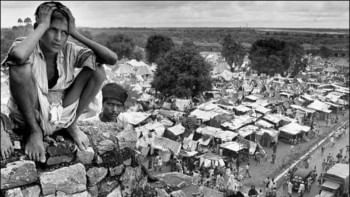

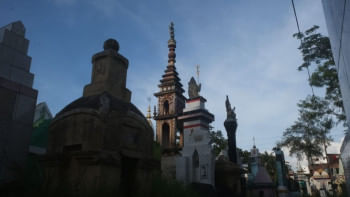
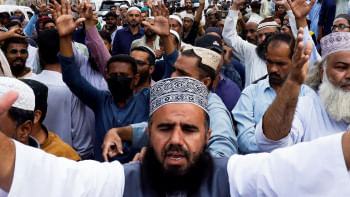





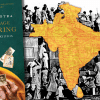
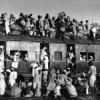



Comments